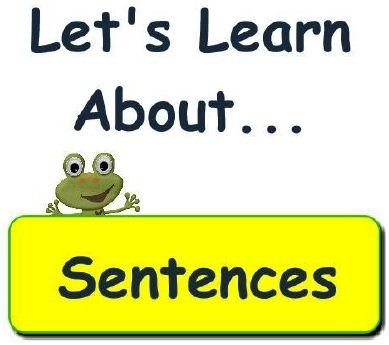Most of the time we think a sentence is a sentence is a sentence. As long as it starts with a capital letter and ends with the correct punctuation mark, but we can actually break sentences up and put them into different groups.

There are 3 types of sentences - a simple sentence, a complex sentence and compound sentences. We will give an easy explanation of each of them and also watch some videos and complete exercises.
Simple sentence
If you have a sentence that consists of a subject (a person or thing that does something), a verb/doing word (what they are doing) and is only one idea ('clause') we call it a 'simple sentence'. Look at the example - The man eats his apple. - 'The man' is the subject and 'eats' is the verb.
- Complete some exercises on simple sentences (their are even some exercises for your big brother or sister) Just think how impressed they will be if you inform then about a 'simple sentence'. http://englishlinx.com/sentences/simple_sentences/
Compound sentence
The next type of sentence is called a 'compound sentence'. If something is a compound it means that things have joined together or were mixed together and this is exactly what a compound sentence is.
You have two simple sentences and you join them together with a 'conjunction' - these are words like 'for, and, nor, but, or, yet and so.'
- watch the video and complete the exercises
Complex sentence
The third type of sentence is a 'complex sentence'. You must not confuse it with a 'compound sentence.'
Remember it like this, If something is 'complex' it means there are more to the story. So this type of sentence has 'more' than just the sentence. What does it have? It has extra information or an extra 'clause'.
So if you have a sentence like 'She had a lot of work, that she had to do", the last part of the sentence gives you more information.
The first part of the sentence can be a simple sentence that can stand by itself (She had a lot of work), and is the 'main idea or main clause', but the second part cannot stand by itself and only adds to the sentence.
Still a bit confused on the differences between these sentences? Watch the video.

